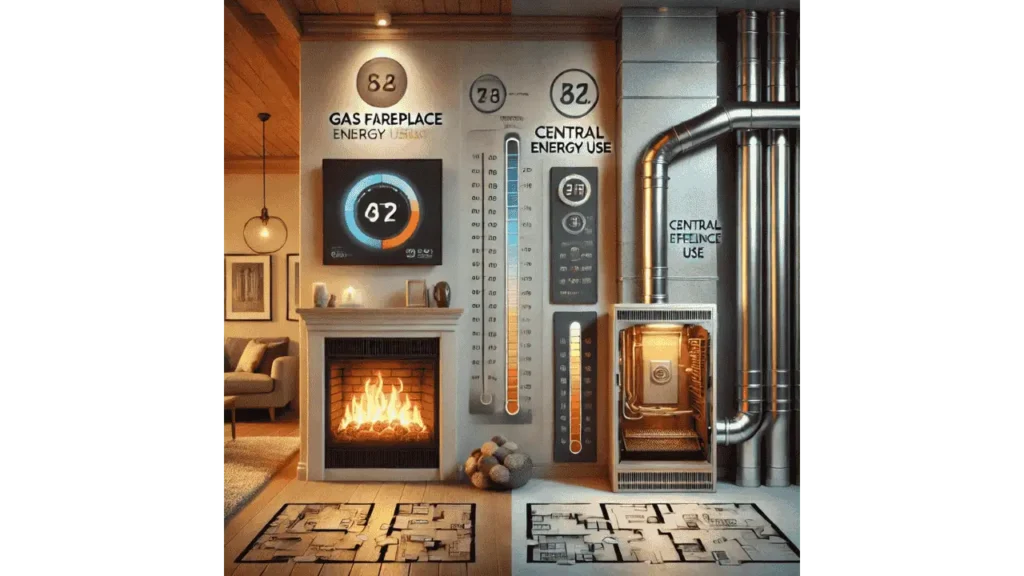Many homeowners wonder whether running a gas fireplace is a more cost-effective option compared to using a furnace. Both have their advantages, but the choice largely depends on factors such as fuel costs, home size, insulation, and heating efficiency. Understanding the cost differences can help you decide which option suits your needs best.
Cost Comparison Between a Gas Fireplace and a Furnace:
The cost of running a gas fireplace versus a furnace depends on several factors. Gas fireplaces are designed to provide supplemental heating and are typically less expensive to operate when heating a single room. Furnaces, on the other hand, are built to heat an entire home efficiently but can be costly to run continuously.
A gas fireplace generally uses less fuel when heating a small space, making it a good choice for targeted warmth. However, a furnace spreads heat evenly throughout the house and can reduce overall energy costs if used strategically.
Energy Efficiency Considerations:
Furnaces are usually more energy-efficient when it comes to whole-house heating. Modern furnaces have high efficiency ratings, often reaching up to 98%, ensuring minimal energy wastage. Gas fireplaces, while visually appealing, may have lower efficiency ratings, with much of the heat escaping through the chimney.
When comparing efficiency, it’s important to consider the insulation and layout of your home. A well-insulated home may benefit more from a furnace, whereas a gas fireplace can provide quick and efficient heat in smaller, well-used spaces.
Long-Term Operating Costs:
Operating costs differ between the two heating options. Running a gas fireplace typically costs around $0.30 to $0.50 per hour, depending on the fuel price and the unit’s efficiency. In contrast, a furnace may cost more per hour but provides comprehensive heating, preventing cold spots and ensuring even distribution.
Additionally, maintenance costs should be considered. Furnaces require regular servicing to maintain peak performance, while gas fireplaces generally require less frequent upkeep, making them a lower-maintenance option in the short term.
Can You Use Fireplaces Instead Of Central Heating?
Gas fireplaces are ideal for supplemental heating and work well in frequently used rooms, allowing homeowners to lower the thermostat for the rest of the house. However, relying solely on a gas fireplace to heat an entire home may not be practical, especially in larger homes with multiple rooms.
While fireplaces provide immediate warmth and a cozy ambiance, they lack the capability to distribute heat evenly across all areas of the home, which central heating systems achieve more effectively.
Why You Shouldn’t Use Fireplaces Instead Of Your Furnace
Although a gas fireplace may seem like a cost-effective solution, it cannot replace a furnace entirely. Several factors make furnaces a better option for whole-home heating.
Efficiency
Furnaces are designed to heat an entire home efficiently, distributing warmth evenly and maintaining consistent temperatures. Gas fireplaces, on the other hand, are better suited for heating a specific area and can lead to uneven heating if used as the primary heat source.
Frozen Pipes
Relying solely on a gas fireplace increases the risk of frozen pipes in unheated areas. A furnace ensures that all parts of the home, including those with plumbing, remain at a safe temperature to prevent potential damage.
Is It Okay To Use Both Your Fireplace And Your Furnace?
Using both a gas fireplace and a furnace can offer the best of both worlds. Running the fireplace in high-traffic areas provides additional warmth and ambiance, allowing you to lower the thermostat and reduce furnace usage. This strategy can help maintain comfort while potentially lowering energy bills.
Conclusion:
Deciding whether a gas fireplace or a furnace is cheaper depends on your specific heating needs. Gas fireplaces are great for supplementing heat in certain areas, while furnaces are more efficient for whole-home heating. Using both systems strategically can provide warmth and cost savings, making your home more comfortable during the colder months.
- 27 Farmhouse Fireplace Ideas That Bring Warmth & Charm - August 18, 2025
- 25 Fireplace Lighting Ideas to Illuminate Your Hearth - August 7, 2025
- How to Replace an Electric Fireplace Switch? - August 5, 2025



